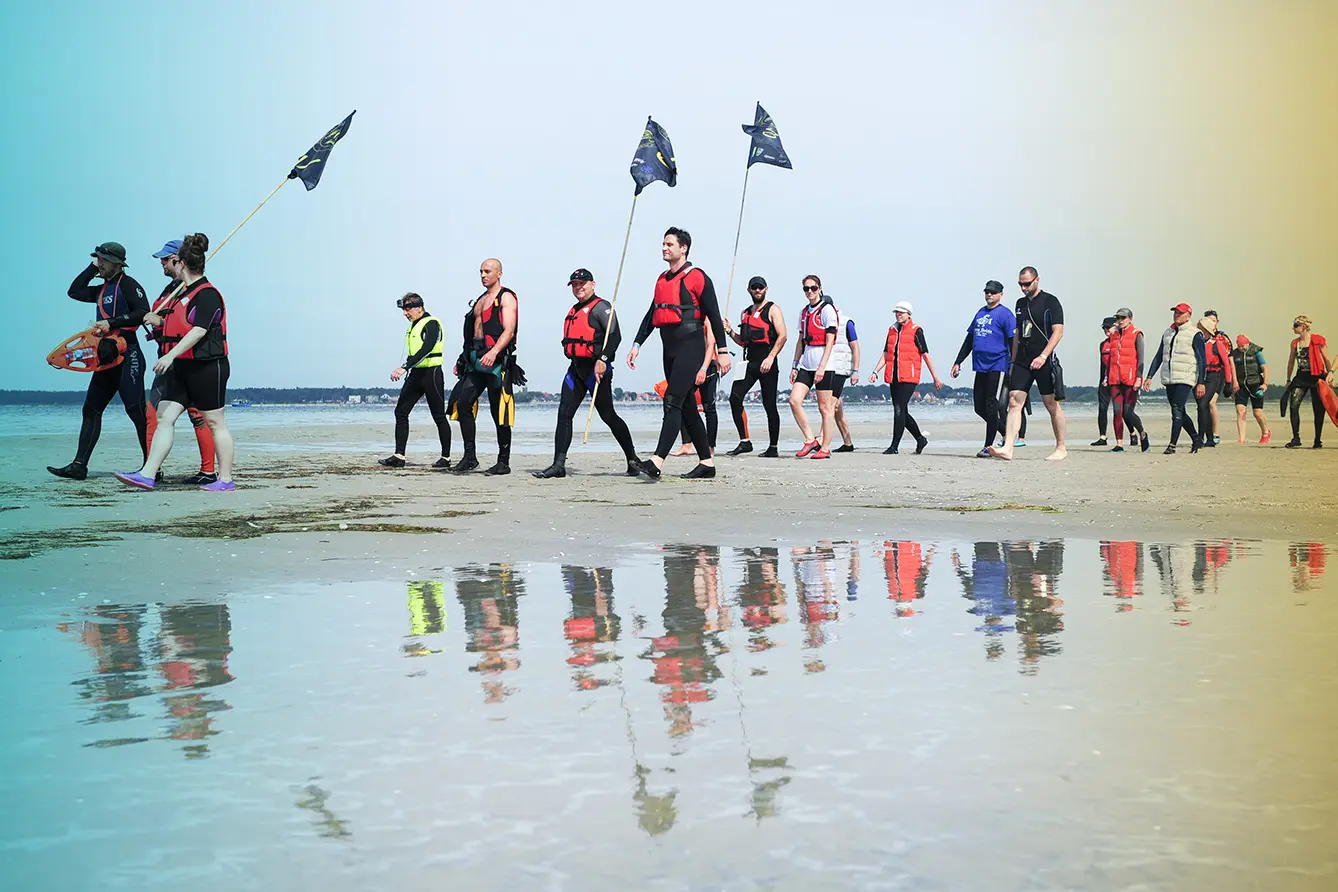There are many ways to sightsee. One popular way is to take a stroll. So why not take that walk to another level? One man did. Radosław Tyślewicz from Gdynia, Poland, has been challenging the locals (no-so-locals) to prove what they are made of and join him on a walk (!) from the Hel Peninsula to Rewa on the opposite side of the bay. ‘So what?’ you might think. Well, this walk is a little different, as the route takes you… through the sea?
Puck Bay: Natural or fake?
The walk is possible thanks to a stretch of a shallow that starts near Kuźnica on Hel Peninsula and continues to Rewa, situated on the mainland. It would be tempting to dismiss the existence of this phenomenon as a man-made addition to the bay – or perhaps a by-product of the port construction. But it would be wrong to do so, as the shallow was designed by Mother Nature herself!
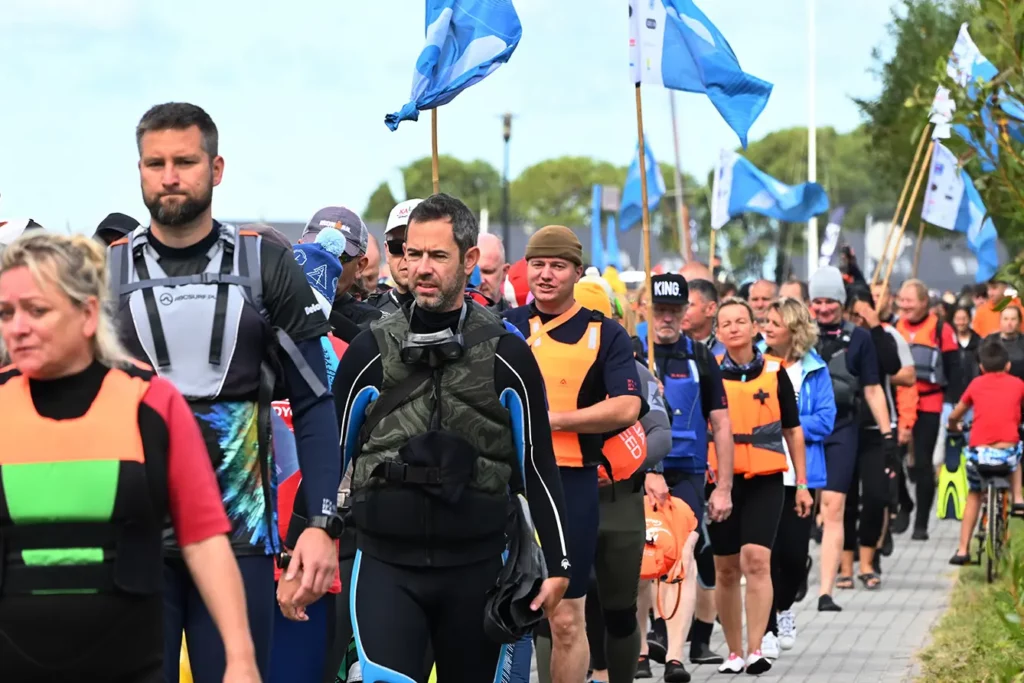

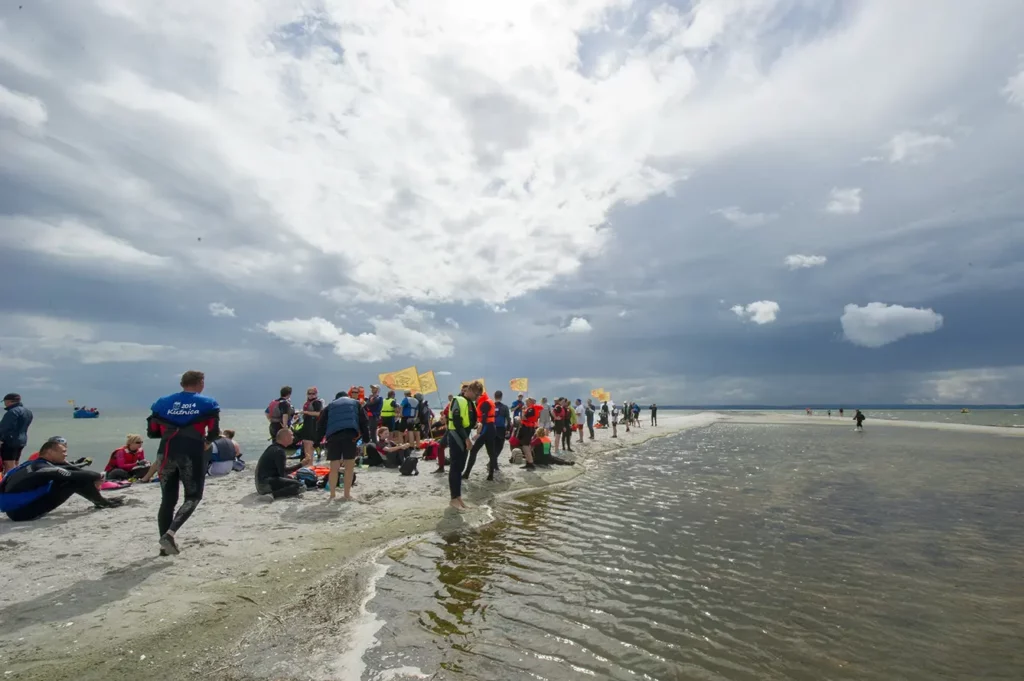
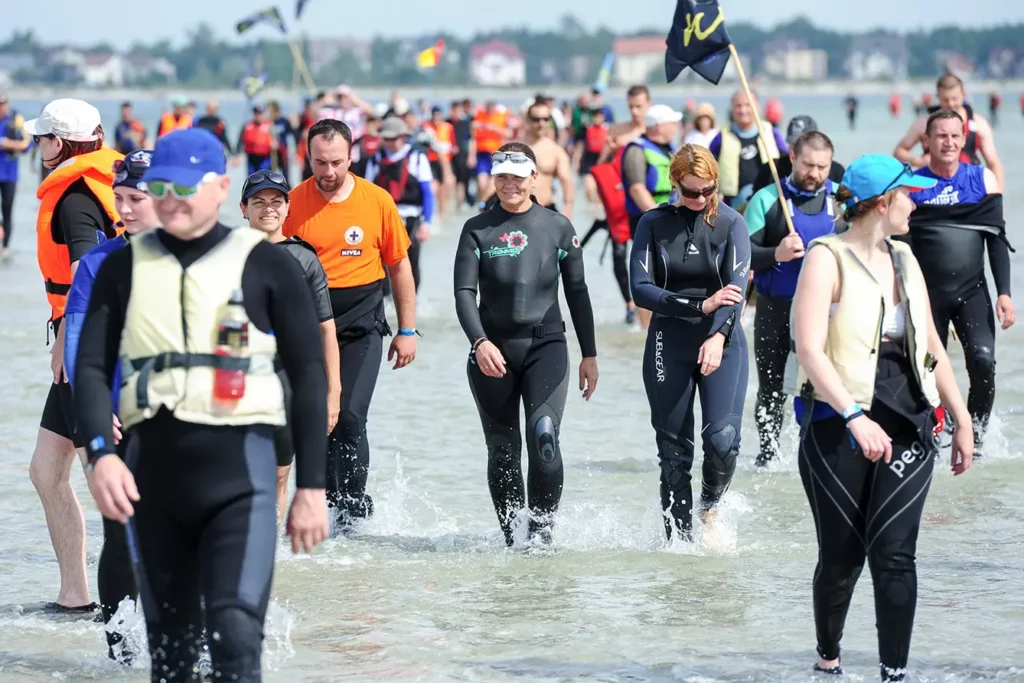
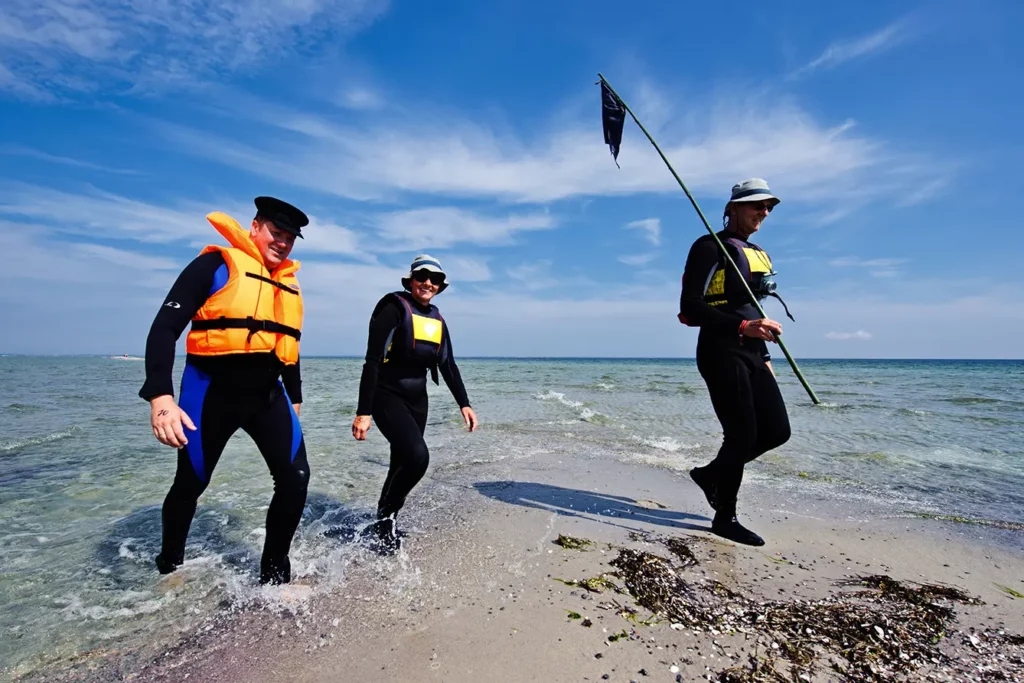
Some hundreds of years ago, when the sea level was lower, the shallow was actually the mainland which turned into Puck Bay thanks to sea levels by about 1.5 meters over the past 1000 years. And there are papers to prove it! The National Geological Institute has confirmed this theory to be true.
The shallow starts some 50 meters off the shore in Kuźnica. There is only one natural break in the shallow, also known as Kuźnica Pit. Once you clear that deeper part, you are in for a … walk. The Seagull Sandbar [Rybitwia Mielizna] stretches for about 6 kilometres. But boats cannot safely travel over shallow waters, hence the reason why in 1918, another “break” was dug. The deeper entrance to the rest of the bay is continuously maintained and stretches for about 700 to 1000 meters depending on the time of year (changing water levels).
Given by nature – taken by men
The Seagull Sandbar has been used by local fishermen (and animals) for hundreds of years. The former would stop here to dry out their nets. The latter use it as a spot to rest (and nest) or… as a passageway. The shallow is not only popular among humans – wild boars also use it to cross from the peninsula to the mainland in a much shorter way than over the land.
And we mustn’t forget that for the human race, any excuse is good to throw an unforgettable party. And so, during the interwar period, the locals would arrange some boards, put up a stage, and dance the night away!
What changed? During the Second World War, German forces used this stretch of land as a proving ground for the testing of weapons and machinery. This was also done throughout the era of Poland’s People’s Republic and was discontinued only in 1991. Needless to say, civilians weren’t allowed. These days, thankfully, the area is being slowly reclaimed.
The March of the Herring
It was this slow, rightful re-annexation of the Seagull Sandbar that inspired Radosław Tyślewicz, Ph.D. (aka the First Herring of the Republic of Poland) to spread the word of the existence of this natural area and, through that, to raise awareness of how necessary it is to clean this stretch of land, important to the wildlife, from wreckage and weapons.
The first march took place on Poland’s Constitution Day (3 May) in 2002 and was attended by only 4 brave participants. They repeated their endeavor 2 years later – twice. On Constitution Day and again in August (the second march gathered 43 participants). Then, since November 2006, the march has become an annual event. These days it has grown so much in popularity that a limit had to be imposed – now, only 100 participants are allowed to take part. But no worries – everyone will get their chance! Apart from the summer editions, the march is also held in the autumn and winter months for the more ambitious.
The march is surrounded by many events, making it a two-day celebration of the sea and local culture. During the walk, you can admire wildlife, learn about the history of the local lands, see the famous ship graveyard (an area with wrecked ships, including one warship sunk during World War Two), get familiarized with the safety rules in water, and, above all, you can “be herringated” during an official ceremony that takes place on the sandbar. This undoubtedly comes with a feeling of achievement and completion.
Do you think you have what it takes to walk like a herring? Just be a wise Herring, and don’t get yourself caught for the locally served herring salad! Rather go and spread the word of this unusual event, wonderful area, and wildlife that needs rescuing.


